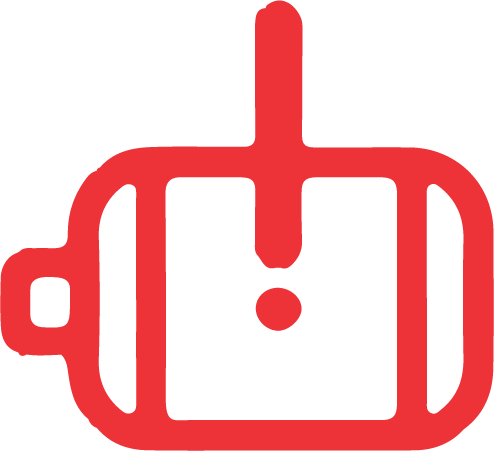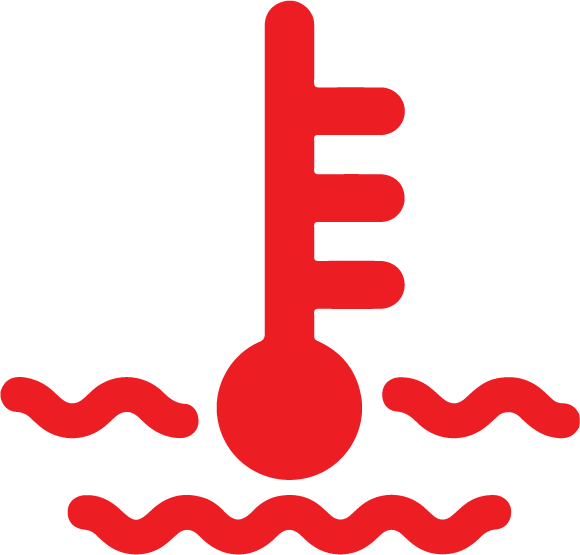Miscellaneous items
13-5 Electric and hybrid vehicle fuel and electrical system
Reasons for rejection
Condition (Note 1)
1. High voltage wiring is:
a) insecure or not adequately secured
b) damaged or deteriorated (including insulation)
c) likely to touch:
i. hot components of the vehicle
ii. sharp edges
iii. rotating parts
iv. the ground.
2. High voltage batteries are:
a) insecure or not adequately secured
b) damaged or deteriorated (including components and electrical insulation)
c) leaking, or showing signs of leaking.
3. High voltage battery or wiring shields are damaged or not in place.
4. A high voltage component’s (eg battery) coolant system is leaking.
5. An electrical system warning lamp is illuminated. See Table 13-5-2 for examples.
Modification
4. A modification affects the electrical system, and:
a) is not excluded from the requirements for specialist certification (Table 13-5-1), or
b) is missing proof of specialist certification, that is:
i. the vehicle is not fitted with a valid certification plate (eg low volume vehicle plate or heavy vehicle certification plate/label), or
ii. the operator is not able to produce a valid modification declaration or authority card
iii. The vehicle has not been certified to an accepted overseas system as described in Technical bulletin 13.
Note 1
Vehicle inspectors are only required to do a visual check. An invasive check is not required.
Table 13-5-1. Modifications that do not require specialist certification
Fitting of or modification to: | Specialist certification is not required provided that: |
|---|---|
Fuel system changes and modifications |
Note: Specialist certification is always required for changes to the high voltage electrical system. |
| High voltage battery and control systems |
Note: For clarity, ‘similar weight’ is within 30kg of the original battery pack weight. |
Fitting of or modification to: | Specialist certification is never required: |
|---|---|
Any modification for the purposes of law enforcement or the provision of emergency services |
|
Table 13-5-2. Electrical system warning icons
General fault The vehicle may indicate exactly what the fault is. If the fault is not from an electrical system, or other safety critical system (eg brakes, steering, electrics, ESC etc.) the vehicle may pass the inspection. |  |
Vehicle electrical fault The vehicle should be referred to a repairer for diagnostics. If the fault is not from a safety critical system (eg brakes, steering, high voltage electrics, ESC etc.), the vehicle may pass the inspection. |  |
Limited power/Limp mode This is likely to do with a fault in the electric drive system. The vehicle should be referred to a repairer for diagnostics. The vehicle must fail the inspection. |  |
Serious electrical fault The vehicle should be referred to a repairer for diagnostics. The vehicle must fail the inspection. |  |
Master warning Could be a warning for any vehicle system and is likely to be serious. The vehicle should be referred to a repairer for diagnostics. The vehicle must fail the inspection. |  |
High battery temperature Remove the car from any indoor premises immediately and turn the vehicle off. The vehicle should be referred to a repairer for diagnostics. The vehicle must fail the inspection. |  |
Summary of legislation
Applicable legislation
Condition and performance
1. The vehicle must be safe to be operated.
2. The components and materials must be fit for their purpose and within safe tolerance of their state when manufactured or modified.
Modifications
3. A modification that affects the electrical system must be inspected and certified by an specialist certifier, unless the vehicle:
a) is excluded from the requirement for specialist certification (Table 13-5-1), and
b) has been inspected in accordance with the requirements in this manual, including those for equipment, condition and performance.
Page amended 1 October 2023 (see amendment details).